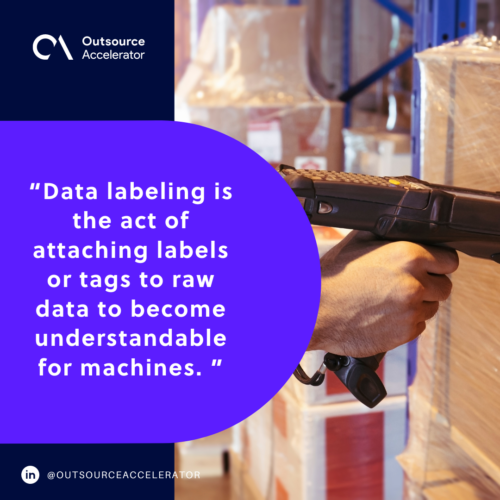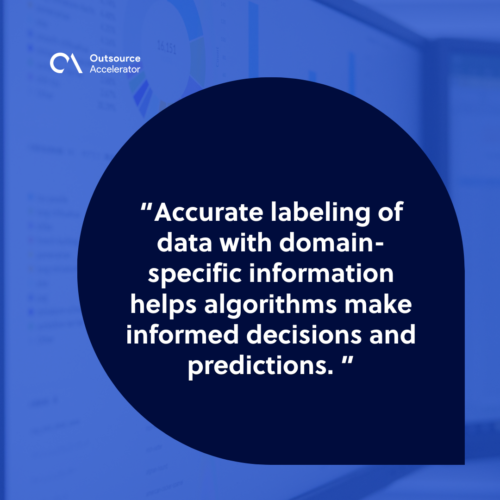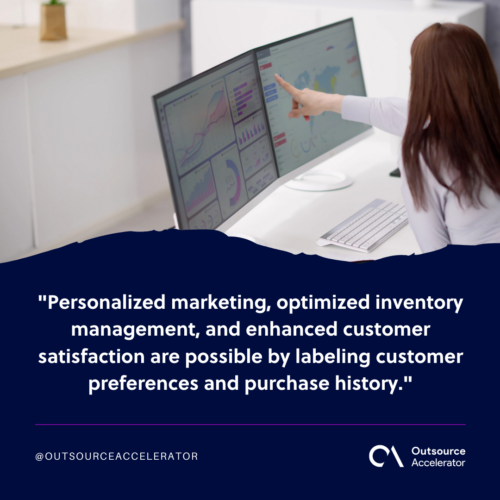Understanding data labeling: Importance, techniques, and industry applications

From artificial intelligence to machine learning, data serves as the backbone for various technological advancements.
But raw data isn’t always immediately useful—it often needs to be organized, categorized, and labeled to be truly valuable. This process is known as data labeling, and its importance cannot be overstated.
In this article, we’ll delve into what data labeling is, why it’s crucial, including the effective techniques, industry applications, and what the future holds for this vital process.
What is data labeling?
Data labeling is the act of attaching labels or tags to raw data to become understandable for machines. This process can take various forms depending on the type of data and the specific requirements of the machine-learning task.
It could involve tagging images with labels like “cat” or “dog,” annotating text with sentiment labels like “positive” or “negative,” or marking objects in videos for tasks like object detection.

Why is data labeling important?
There are several reasons why data labeling is important:
Training machine learning models
Data labeling serves as the foundational step in training machine learning models. Machine learning algorithms require labeled data to understand patterns and relationships.
Without accurate labeling, algorithms struggle to learn and generalize from the data they’re presented with.
Quality assurance
Data labeling is crucial to ensure the accuracy and consistency of datasets. It is important to label the data meticulously to avoid errors and inconsistencies.
This helps prevent skewed outcomes and unreliable predictions, making sure that the resulting models are robust and trustworthy.
Algorithm performance evaluation
Labeled data provides a benchmark for evaluating the performance of machine learning algorithms.
Developers can measure the effectiveness and efficiency of their algorithms by comparing the predicted outcomes with the actual labels. This evaluation is essential for improving the performance of machine learning models over time.
Domain-specific understanding
Data labeling adds specific context to specialized fields like healthcare or finance, enabling algorithms to understand industry-specific nuances.
Accurate labeling of data with domain-specific information helps algorithms make informed decisions and predictions.

Enhancing data interpretation
Labeled data facilitates easier interpretation and analysis by attaching meaningful labels to raw data.
Data becomes easier to understand for data scientists and stakeholders by improving its accessibility. It leads to better-informed decision-making.
5 techniques for effective data labeling
When using data labeling, there are five techniques to consider:
1. Active learning
Active learning involves machine learning algorithms engaging with users to solicit labels for data points interactively.
Instead of labeling a large volume of data upfront, active learning focuses on labeling the most informative data points.
2. Crowdsourcing
Crowdsourcing involves outsourcing data labeling tasks to a large group of people, typically through online platforms. Tapping into the collective intelligence of the crowd, companies can efficiently label large datasets at scale.
Platforms like Amazon Mechanical Turk allow companies to distribute labeling tasks to remote workers. It accelerates the labeling process while maintaining quality control through verification mechanisms.
3. Semi-supervised learning
Semi-supervised learning uses both labeled and unlabeled data to train models when labeling large amounts of data is impractical or expensive.
This approach leverages the structure and relationships within data to enhance model performance without requiring extensive manual labeling.
4. Active learning with human-in-the-loop
Active learning with human-in-the-loop combines the strengths of machine learning algorithms with human expertise. In this method, the algorithm initially makes predictions on unlabeled data, which are then validated or corrected by human annotators.
5. Transfer learning and pre-trained models
Transfer learning involves using knowledge from pre-trained models for data labeling tasks.
Pre-trained models, trained on labeled data for a related task, can be fine-tuned for specific labeling tasks in new domains.
Industry applications of data labeling
Here are some industry applications of data labeling:
Healthcare
Data labeling is important in medical imaging analysis, disease diagnosis, and patient monitoring. Labeled medical images permit machine learning algorithms to:
- Detect anomalies
- Identify diseases
- Assist healthcare professionals in making accurate diagnoses
Correctly labeled patient records enable data analysis to personalize medicine and gain insights into treatment efficacy and disease progression.
Retail
Data labeling is instrumental in various retail applications such as:
- Customer segmentation
- Product recommendation systems
- Demand forecasting
Personalized marketing, optimized inventory management, and enhanced customer satisfaction are possible by labeling customer preferences and purchase history.
Labeled product attributes and descriptions also improve search relevance and facilitate online shopping experiences.

Finance
Data labeling underpins critical tasks such as fraud detection, risk assessment, and algorithmic trading. Labeled financial transactions and market data enable machine learning algorithms to:
- Detect suspicious activities
- Assess credit risk
- Make data-driven investment decisions
The future of data labeling
The future of data labeling promises to be dynamic and transformative, driven by advancements in technology and evolving industry demands.
With the rise of synthetic data generation, automation, and AI-powered tools, data labeling is becoming more efficient, scalable, and accurate.
Domain-specific labeling solutions tailored to different industries are emerging to address unique challenges and requirements.
Moreover, the collaboration between humans and AI systems through hybrid labeling models is fostering higher accuracy and productivity.
Data labeling is becoming increasingly pivotal in supporting the development of AI-driven applications and reshaping the way we interact with data in the digital age.







 Independent
Independent




